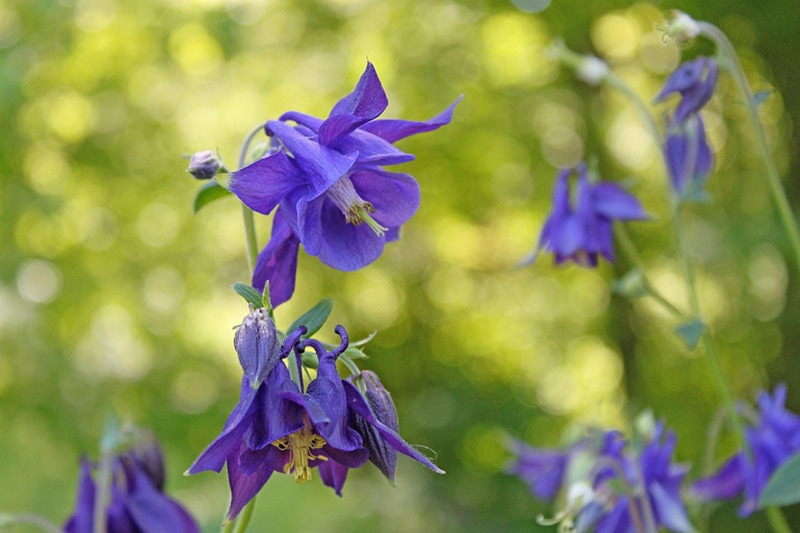19 Wildflowers That Grow in Idaho (Identification Guide with Pictures)
-

- Last updated:
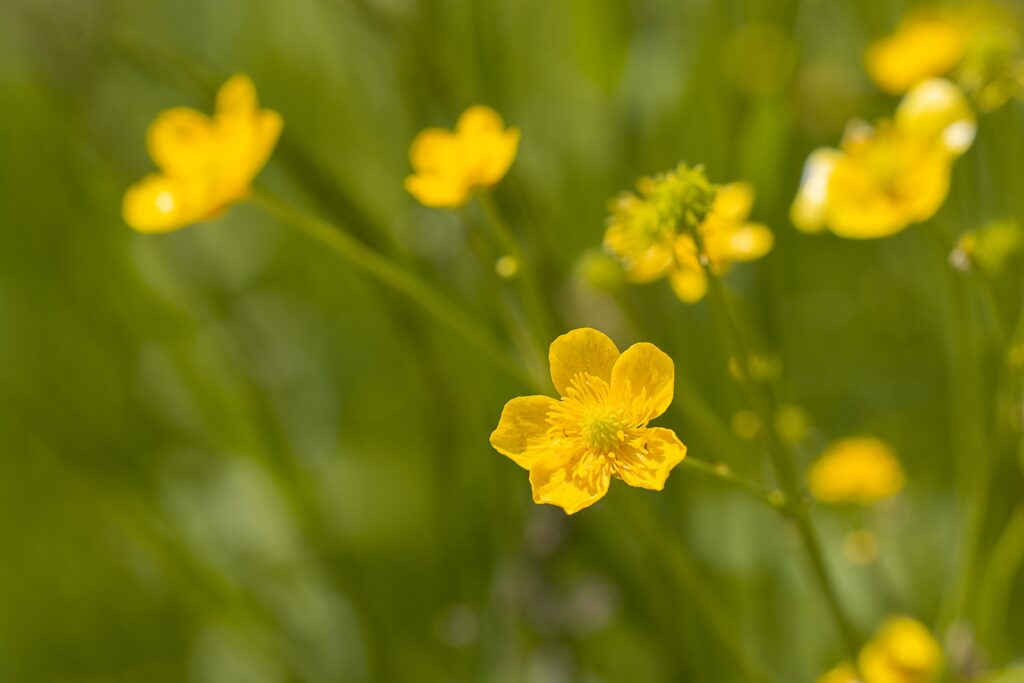
Idaho is home to various beautiful plants, and this US state has some of the most gorgeous wildflowers. Because of the variety of Idaho wildflowers, it can be hard to identify and recognize them.
This article will provide you with a list of some of the prettiest wildflowers that grow in Idaho and how to identify them, so be sure to check them out below.
The 19 Wildflowers That Grow in Idaho
1. Yellow Fritillary

| USDA Hardiness Region: | 7–10 |
| Sun: | Full sun/partial shade |
| Soil: | Well-draining, gravelly, rocky |
Yellow fritillary is a beautiful wildflower that grows in Idaho and it’s one of the first flowers to bloom in early spring. This plant has only one flower, that’s yellow in color and shaped like a bell which is how this plant got its name. The yellow fritillary commonly grows in grasslands, forests, and sagebrush deserts. This plant is typically between 4 and 10 inches tall, and it needs full sun/ partial shade to prosper. When it comes to the soil this plant likes, it prefers well-draining soil that’s either gravelly or rocky.
2. Buttercup
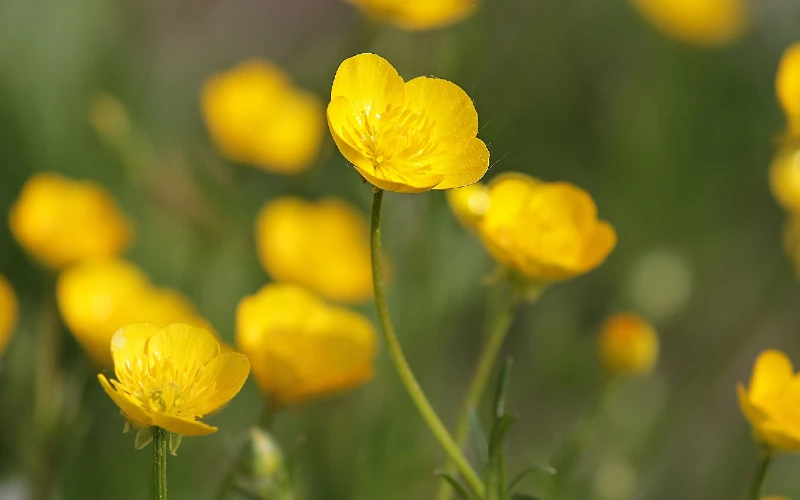
| USDA Hardiness Region: | 8–11 |
| Sun: | Full sun/ partial shade |
| Soil: | Light, well-draining, cool |
Buttercup is another stunning wildflower that grows in Idaho, typically in early spring. These plants have tiny flowers that are typically yellow, although they can also be red, pink, and orange. Buttercups are typically up to 12 inches long, and they need full sun to partial shade to prosper. One of the things that these wildflowers are picky about is their soil; it needs to be light, cool, and well-draining for buttercup to prosper. They are typically found in moist mountain meadows and lower elevations.
3. Shooting Star
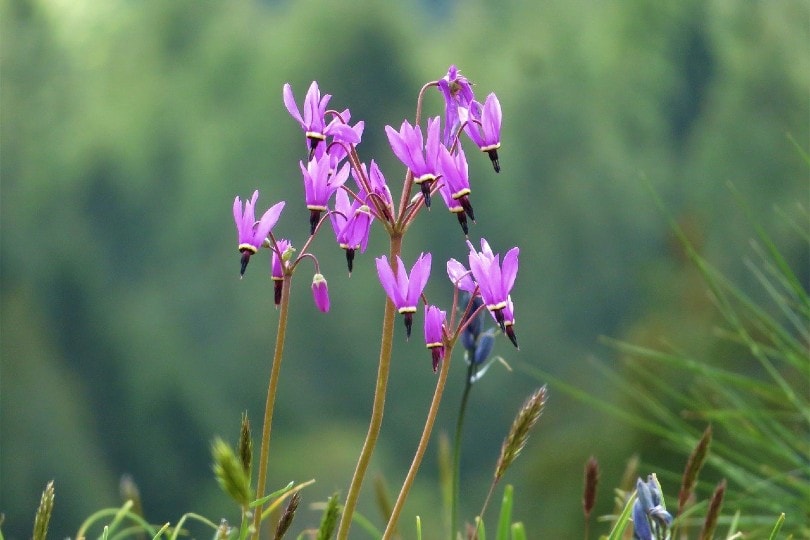
| USDA Hardiness Region: | 4–8 |
| Sun: | Partial shade |
| Soil: | Moist, well-draining |
Shooting star is a wildflower common in central and eastern US, and you can also find it in Idaho. This plant blooms from April to July and has small, dart-like flowers, purple or pink in color. Shooting stars prosper the best in partial shade, although you can keep this plant in full sun if you live in a colder climate. When growing a shooting star, you should provide it with well-draining, yet moist soil to allow the plant to grow healthy and strong. This plant is quite tall and can reach between 1 and 2 feet in height.
4. Dogtooth Violet

| USDA Hardiness Region: | 4–9 |
| Sun: | Partial shade/full shade |
| Soil: | Moist, well-draining |
Dogtooth violet is the only violet wildflower that grows in Idaho. This plant has yellow or pink flowers, and it blooms in early to late spring. Unlike most flowers, this wildflower prospers in partial shade to full shade, and it needs moist, well-draining soil to prosper. The dogtooth violet is typically small and only reaches a size of 12 inches. Since this plant doesn’t need a lot of sun, it’s a perfect addition for gardens in shaded areas.
5. Trillium
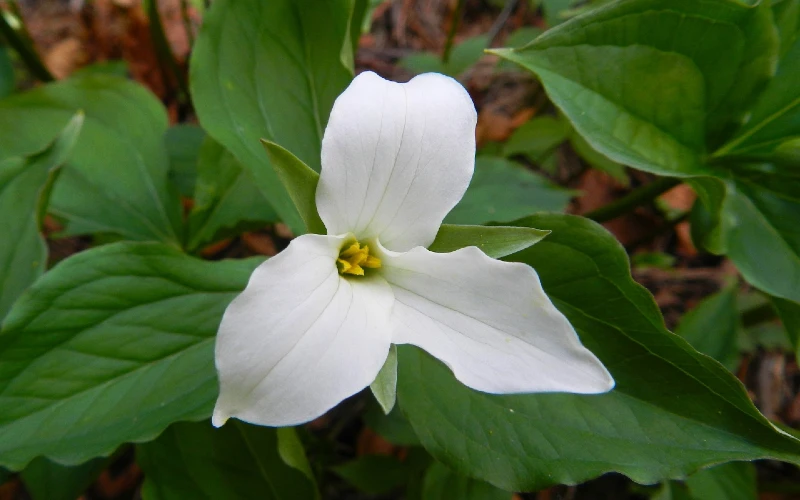
| USDA Hardiness Region: | 4–9 |
| Sun: | Partial shade |
| Soil: | Well-draining, moist, rich |
Trillium is a stunning, single-flowered wildflower that grows in Idaho. It grows best in partial shade and needs well-draining, moist, and rich soil. This plant is typically between 8 and 16 inches tall, and it blooms from midwinter to the end of spring. The flower of this plant is first white, but with age, it slowly turns pink, until it eventually becomes rose-colored. Typically, you can find this flower in woods and along stem banks.
6. Teasel
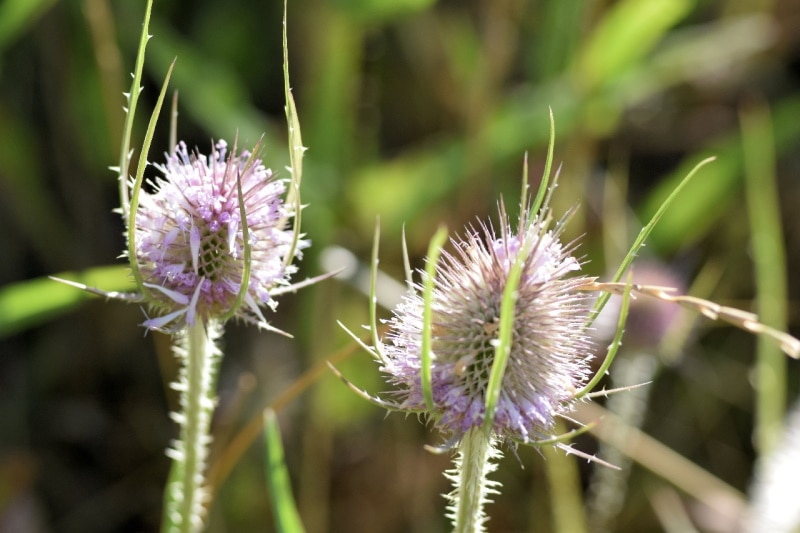
| USDA Hardiness Region: | 3–8 |
| Sun: | Full sun/partial shade |
| Soil: | Moist, well-draining |
Teasel is a beautiful, spiky wildflower you can encounter in Idaho. This plant has a pinkish flower with small spikes, and it blooms between July and August. Its natural habitats are grasslands, woodlands, and riverbanks, although you can also grow them in your garden. Teasels can grow quite high, reaching up to 6 feet in height. This plant is excellent for attracting wildlife and beneficial insects to your garden.
7. Chicory
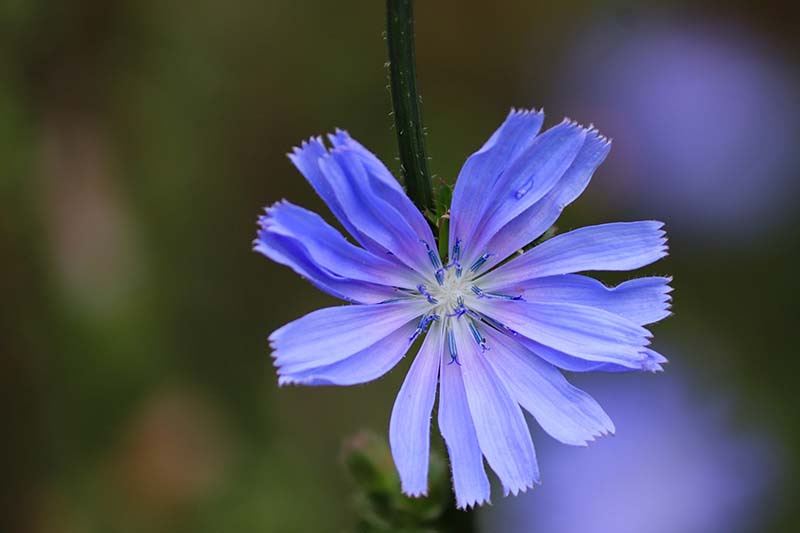
| USDA Hardiness Region: | 3–10 |
| Sun: | Full sun/partial shade |
| Soil: | Well-draining, rich |
Chicory is truly a unique wildflower you can find in Idaho. One of the things that make chicory stand out is its blue color, which is not that common in other flowers. This plant needs full sun to partial shade to prosper, and its soil should be rich and well-draining. Although chicory has stunning flowers, they only bloom for a day which can make it hard to spot this lovely flower in its best shape. Depending on the environmental conditions, chicory can be between 1 and 4 inches high.
8. Syringa

| USDA Hardiness Region: | 3–8 |
| Sun: | Full sun/partial shade |
| Soil: | Sandy, loamy, clay |
Syringa, also known as the mock orange, is a beautiful wildflower that’s also the state flower of Idaho. It grows best in full sun to partial shade and can prosper in various soils, including sandy, loamy, and clay soil. Syringa can grow quite high, reaching a height between 4 and 6 feet. This plant is drought tolerant which makes it excellent for areas where there’s not much rain. When growing syringa in your garden, ensure to practice regular pruning to prevent overspreading and overgrowing.
9. Pink Pyrola

| USDA Hardiness Region: | 4–8 |
| Sun: | Partial sun/partial shade |
| Soil: | Wet, well-draining |
Pink pyrola is a rare perennial wildflower you can find in Idaho. It blooms in late June and produces small pinkish-white flowers. This plant needs partial sun to partial shade to prosper and it grows best in wet, well-draining soil, although it can tolerate other soil types as well. Pink pyrola is typically between 5 and 15 inches high and grows in USDA hardiness zones 4–8. This is typically not a plant you can grow in your home garden; if you want to see this plant, you can look for it in wet and shady areas.
10. Lupine

| USDA Hardiness Region: | 4–8 |
| Sun: | Full sun/partial shade |
| Soil: | Well-draining, acidic |
Lupine is an Idaho wildflower that stands out due to its hot pink color. This plant needs full sun to partial shade to thrive. When it comes to soil preferences, lupine needs well-draining soil, preferably slightly acidic. It’s important to keep this plant away from alkaline soils as it won’t be able to prosper. This plant is commonly between 12 and 36 inches tall and it’s an excellent choice for any garden.
11. Sego Lily

| USDA Hardiness Region: | 3–8 |
| Sun: | Full sun/partial shade |
| Soil: | Well-draining, dry, loamy |
Sego Lily is another beautiful wildflower you can find in Idaho. It grows in USDA hardiness zones 3–8 and needs full sun to partial shade to prosper. Sego lily blooms between May and July, producing stunning white flowers with pink details. Unfortunately, its flowers only last for a couple of days before they dry off. This plant is between 8 and 20 inches tall. When growing this plant in a garden, ensure to keep its bulbs protected because they attract pests and rodents.
12. Pussytoes

| USDA Hardiness Region: | 3–9 |
| Sun: | Full sun/partial sun |
| Soil: | Loamy, rocky, clay, well-draining |
Pussytoe is an Idaho wildflower you can encounter near meadows, woodlands, fields, and roadsides. This plant grows in USDA hardiness zones 3–9 and needs full to partial sun to thrive. Pussytoe is not picky about the soil it grows in, so it can grow well in loamy, rocky, and clay soil, as long as it’s well-draining. These plants are between 4 and 12 inches tall, and they bloom in mid-April, producing tiny, white flowers.
13. Death Camas

| USDA Hardiness Region: | 4–8 |
| Sun: | Full sun/partial shade |
| Soil: | Rocky, sandy |
Death camas is a stunning, yet toxic wildflower that grows in Idaho. As this plant is toxic, it’s not the best choice for your home garden, although it’s lovely to see it in the wilderness. These plants grow best in USDA hardiness zones 4–8 and need full sun to partial shade to thrive. When it comes to their soil requirements, death camas prefer rocky and sandy soil. As death camas are toxic, they can survive in various environments, from mountain valleys to grasslands and coastal areas.
14. Queen’s Cup

| USDA Hardiness Region: | 4–8 |
| Sun: | Partial shade/full shade |
| Soil: | Moist, well-draining, rich |
Queen’s cup is a perennial wildflower that you can find in Idaho. This plant grows in USDA hardiness zones 4–8 and it blooms from May through July. During bloom time, this plant produces one white, star-shaped flower. The queen’s cup is not a needy plant, and it can grow in various soils, although it prefers moist, well-draining, rich soils. Unlike most wildflowers, the queen’s cup needs partial to full shade to thrive and grow, which makes it perfect for shaded gardens.
15. Honeysuckle
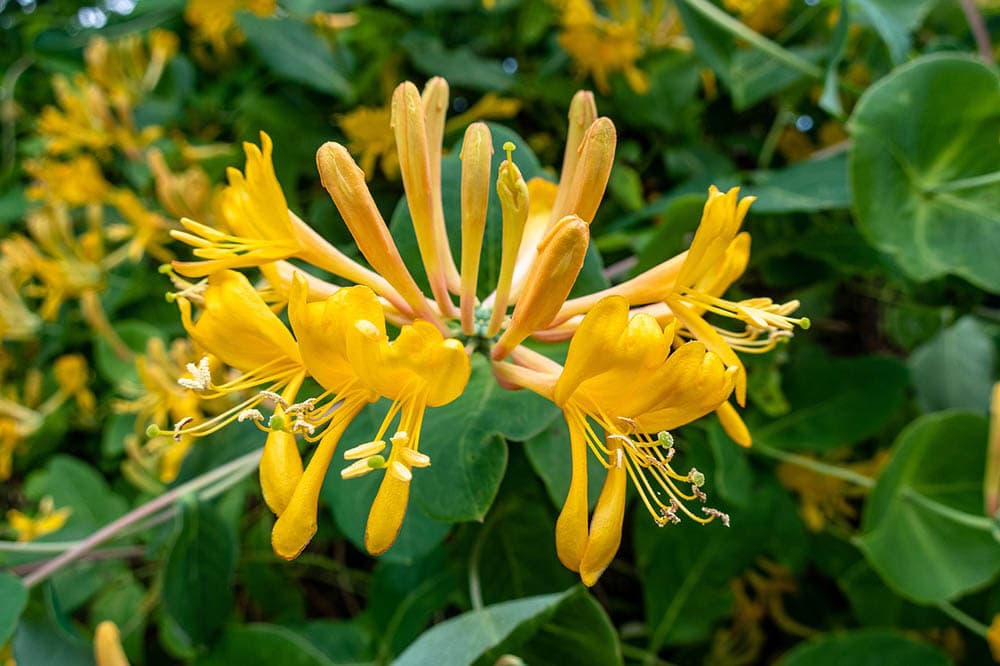
| USDA Hardiness Region: | 5–9 |
| Sun: | Full sun |
| Soil: | Rich in organic matter, well-draining |
Honeysuckle is a vine-like wildflower that grows in many US states, including Idaho. It needs full sun to grow healthy and strong. This plant is particularly picky about its soil which would be well-draining and rich in organic matter. Honeysuckle is sun tolerant, and it produces stunning, tiny two-colored flowers from mid-May to early summer. This is a perfect garden plant because it attracts positive insects such as butterflies and bees.
16. Twinflower

| USDA Hardiness Region: | 2–6 |
| Sun: | Full sun/partial shade |
| Soil: | Well-draining, moist |
Twinflower is a perennial wildflower that typically grows in dense woodlands of Idaho. It blooms from June to September, producing multiple white and pink bell-shaped flowers. This plant is typically between 8 to 16 inches high and needs well-draining, moist soil to thrive. Twinflower needs a long time to germinate, so if you want to grow them in your garden, it’s best to purchase the plant from a local garden center.
17. Prince’s Pine

| USDA Hardiness Region: | 5–8 |
| Sun: | Full sun/partial shade |
| Soil: | Well-draining, moist |
Prince’s pine, also known as pipsissewa, is an evergreen shrubby wildflower you can find in Idaho. It blooms from early summer to late summer, producing tiny, pinkish flowers. Typically, these plants are between 4 to 10 inches high, and they prosper best in well-draining, moist soils. This plant is typically rare as a houseplant, although you can also grow it indoors as long as you provide it with enough water.
18. Harebell
| USDA Hardiness Region: | 3–6 |
| Sun: | Full sun/partial shade |
| Soil: | Gravel, sandy, rocky, well-draining |
Harebell is a perennial, fast-growing wildflower that grows in USDA hardiness zones 2–7, and you can frequently notice this plant in Idaho. This plant grows best in full sun to partial shade, and it can tolerate various soils, including gravel, sandy, and rocky soil, as long as it’s well-draining. It blooms from summer to fall and produces blue-purplish flowers. Harebells are easy to take care of, so you can grow them in your garden without spending too much time on their maintenance. Typically, these plants are between 12 and 18 inches high.
19. Fairybells

| USDA Hardiness Region: | 5–8 |
| Sun: | Partial shade/full shade |
| Soil: | Moist, well-draining, rich in organic matter |
Fairybells are perennial wildflowers that grow in USDA hardiness zones from 5–8, and you can commonly encounter them in Idaho. These plants prefer partial shade although they can also grow in full shade. When it comes to their soil needs, fairybells prefer moist, well-draining soil rich in organic matter. Fairybells are typically between 24 to 30 inches tall, and they are highly disease tolerant.
Conclusion
This list provides information about some of the most beautiful wildflowers in Idaho. If you want to see one of these plants or grow them in your garden, check out their growing requirements and information about their natural habitat. Hopefully, you won’t have any issues identifying one of these flowers after reading our article.
Featured Image Credit: Petra, Pixabay
Contents

